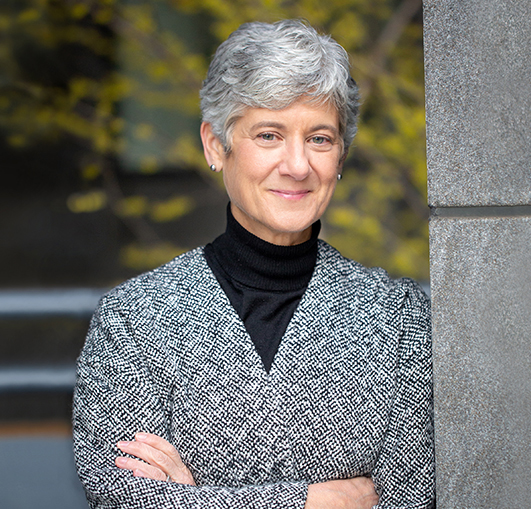 The World Intellectual Property Organization (WIPO) has published its annual World Intellectual Property Indicators. The 2017 report dissects the macro trends associated with filing activity and registrations for 2016 in the following areas: patents, trademarks, industrial designs, plant varieties, and geographical indications. Indicators for design patent applications are based on data from approximately 140 patent offices, encompassing both direct national and regional applications, as well as applications received through the Hague System for the International Registration of Industrial Designs.
The World Intellectual Property Organization (WIPO) has published its annual World Intellectual Property Indicators. The 2017 report dissects the macro trends associated with filing activity and registrations for 2016 in the following areas: patents, trademarks, industrial designs, plant varieties, and geographical indications. Indicators for design patent applications are based on data from approximately 140 patent offices, encompassing both direct national and regional applications, as well as applications received through the Hague System for the International Registration of Industrial Designs.
Applications Near One Million Mark with Continued Application Growth in China
For the second consecutive year, the number of design applications filed worldwide continued to grow, with an estimated 963,100 applications filed in total globally. The 2016 growth rate was 10.4%, following 2015’s more modest growth rate of 2.3% and 2014’s 10.2% drop in applications. 90% of the growth in 2016 can be attributed to increased filings in China.
Following moderate growth in 2015, the State Intellectual Property Office of China (SIPO) received over half (52%) of all design applications filed worldwide in 2016 with a 14.3% in application design count, reaching 650,344. SIPO was followed in design counts by the European Union Intellectual Property Office (EUIPO) with 104,522; the Korean Intellectual Property Office (KIPO) with 69,120; the offices of Germany with 56,188 and Turkey with 46, 305. The top 20 offices worldwide combined accounted for 93% of designs in all applications filed. Of these the US saw 12.1% growth.
While the overall number of applications filed in 2016 increased, industrial design registration declined by 3.5%, which was mainly due to a considerable decrease in registrations in China. The decline in registrations in China may be the result of a sharp decrease in filings (-14.4%) in 2014. Despite the decline in registrations, a record 3.6 million were in force worldwide in 2016, up 6% from 2015. The number of registrations in force in China increased by over 120,000 to reach 1.36 million – 36% of the world total. China was followed by the Republic of Korea with 338,234; the US with 307,018, Japan with 250,819 and the EUIPO with 194,781. This represents 4.6% growth for the US and 9.7% growth for China. Japan saw a slight decrease of 0.1%.
Further Growth in Hague Filings
The Hague System saw an increase of 35.6% in international applications for its second consecutive year of booming growth representing 5,562 international applications, representing annual growth of 13.9%. Because international applications filed under the Hague agreement can contain more than one design, this amounted to a total of 18,716 designs. This continued strong growth reflects the continued expansion of the Hague system to include Japan, the Republic of Korea, and the U.S within the past few years.
Filers from the top five countries using the Hague System accounted for almost 60% of all filings. Applicants residing in Germany were the largest users of the Hague System in 2016, with 3,917 designs in applications; followed by Switzerland (2,5550), the Republic of Korea (1,882), the U.S. (1,410), and the Netherlands (1,317). All saw significant growth except for Switzerland, which saw a decline of 22.9%. Worldwide, the Hague System accounted for 15.8% of all designs contained in non-resident applications in 2016.
Furnishings and Articles of Clothing Lead in Locarno
The Locarno Classification is the international classification system used for the purposes of the registration of industrial designs that is administered by the World Intellectual Property Organization (WIPO). In 2016, of the 32 Locarno classes of industrial designs, more than a quarter (26.7%) were classified as furnishings (10.8%), articles of clothing (8.6%), and packages and containers (7.3%). Locarno classes are furthermore divided into 12 industry sectors, highlighting the most important sectors for industrial design in each country. Industrial design filings were clustered in three sectors, although the ranking for these sectors varied by office. In EUIPO, Germany, India, and the Republic of Korea, textiles and accessories was the top sector, while furniture and household goods had the largest share in Australia, the Islamic Republic of Iran, Turkey, and the U.K.
While the indicators for 2017 are still to be tallied, we can expect to see continued growth particularly in Hague System filings with the addition of Russia and Canada to the system.

![[IPWatchdog Logo]](https://ipwatchdog.com/wp-content/themes/IPWatchdog%20-%202023/assets/images/temp/logo-small@2x.png)

![[Advertisement]](https://ipwatchdog.com/wp-content/uploads/2024/04/Artificial-Intelligence-2024-REPLAY-sidebar-700x500-corrected.jpg)
![[Advertisement]](https://ipwatchdog.com/wp-content/uploads/2024/04/UnitedLex-May-2-2024-sidebar-700x500-1.jpg)
![[Advertisement]](https://ipwatchdog.com/wp-content/uploads/2024/04/Patent-Litigation-Masters-2024-sidebar-700x500-1.jpg)

![[Advertisement]](https://ipwatchdog.com/wp-content/uploads/2021/12/WEBINAR-336-x-280-px.png)
![[Advertisement]](https://ipwatchdog.com/wp-content/uploads/2021/12/2021-Patent-Practice-on-Demand-recorded-Feb-2021-336-x-280.jpg)
![[Advertisement]](https://ipwatchdog.com/wp-content/uploads/2021/12/Ad-4-The-Invent-Patent-System™.png)






Join the Discussion
No comments yet.